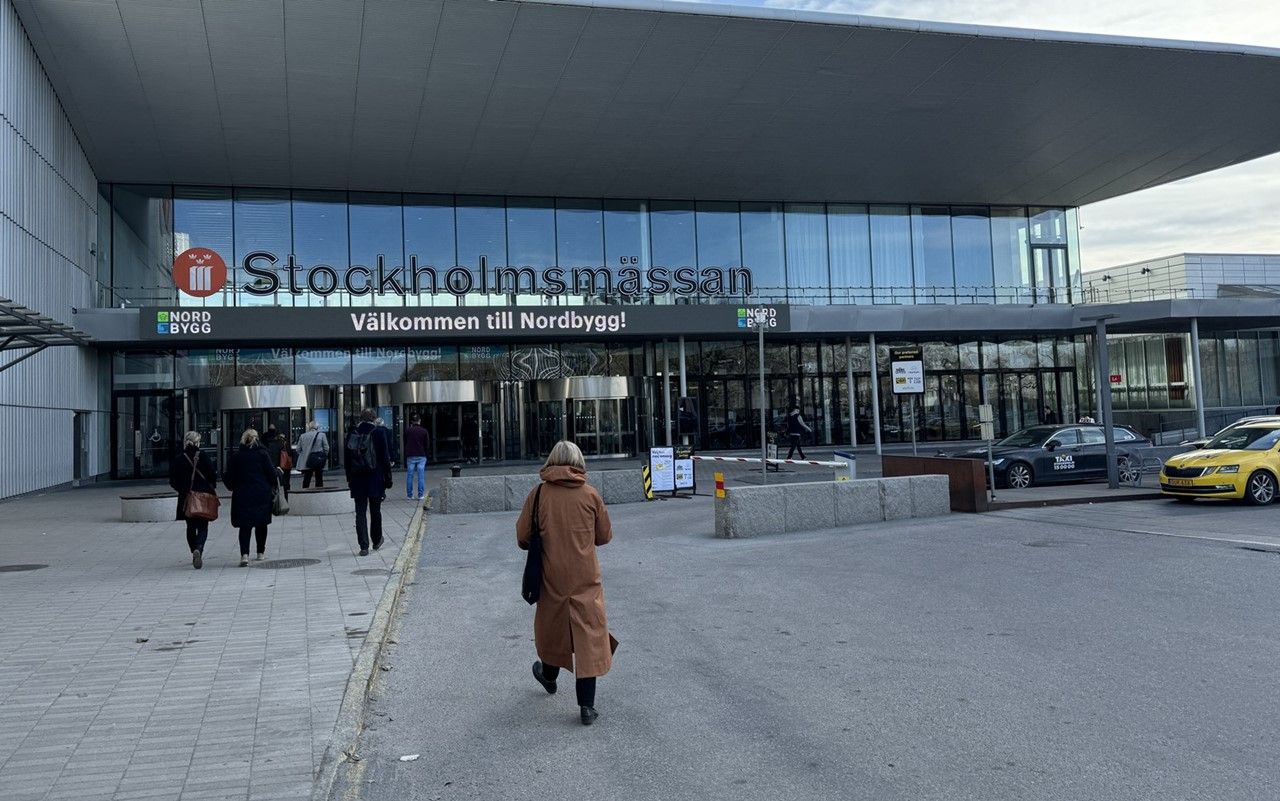To buy an architect
Architects are the closest to the market. They are amongst the first to suffer in a downturn and also amongst the first to see the light at the end of the tunnel. But what do the recent company acquisitions in the industry signify?
An 80-person northern Californian architectural firm with a strong education, civic and healthcare portfolio and established management and marketing systems wants to acquire architectural firms in the Bay Area and Los Angeles with strong healthcare, education and/or sustainability portfolios. Long term ownership potential or outright acquisition. Preferably the firm would have leaders with at least 10-year horizons."
Announcements like this are currently not hard to find in the US. According to the 2011 Merger & Acquisition Survey by ZweigWhite, a US-based firm providing business management services for architecture, engineering and environmental consulting firms, the percentage of companies considering acquisitions or selling out has increased dramatically over the last few years. In 2011, 57 pct of firms say that they are currently considering buying another company - a 6 pct increase on 2010. A huge jump was seen in those considering selling out to another company. In 2010, 29 pct of respondents reported that they were considering selling, but the number shot up to 55 pct in 2011. According to the 2011 survey, 20 pct of firms say they are considering merging, and only 17 pct say they are not considering any kind of M&A activity. All in all, 65 pct have declared that mergers or acquisitions form part of their strategic plan for the next five years. In its summary of the findings of the report, ZweigWhite went even further, concluding that 2011 may be the year for mergers and acquisitions in the AE (architecture and engineering) sector.
No change of plan
The global turbulence in the second half of the year will definitely have had a negative impact on such decisions, which doesn't change the fact that there is already something going on. In fact, this is not restricted to the US. Over the last year two sizeable acquisitions of architectural practices have also taken place in Poland. Capita Symonds, one of the UK's largest consultancies for property and infrastructure projects, both on a national and international level, recently bought out the architectural and design group ESA for an undisclosed sum. The purchased design practice has offices in London, Hull and Katowice and a combined staff of over 60 people, but it was the Katowice office in particular that caught Capita Symonds' attention. "The acquisition of ESA provides Capita Symonds with an established office in Poland from which the company is looking to further expand in the CEE region," explains Richard Nelson, international business development director at Capita Symonds.
Swedish-based Sweco has also bought a company in Poland to expand further in the region. Since 2004 Sweco has established a presence, also via acquisitions, in Russia, Estonia, the Czech Republic and Bulgaria. Last year the company bought two engineering and project management Polish firms, Hydroprojekt Kraków and Transprojekt, with a total of almost 200 employees, and in February this year it also acquired the well-known Warsaw-based APA Markowski i Architekci studio. Also this year, Sweco brought Lithuanian consulting engineering company Energetikos Linijos into its stable, along with its staff of about 30.
Who's next?
"Despite the size of the market in the Baltic states, such activities are not a novelty," Jan Skolimowski of the Tallinn-based KAMP Arhitektid studio, observes. "There have been some acquisitions over the last few years. Here in Estonia things always happen faster, because the country is small. The number is not very high, but some small companies have been taken over by big Swedish and Finnish players. In my opinion, this definitely has an impact on the market, but it rarely extends to architectural quality. I am afraid it is the other way round. Currently the situation is tough and I think there are even harder times ahead. No one knows what will happen over the next few years. Recently we've been seeing lots of people from the construction field moving from Estonia to Finland, Sweden and Norway, because there is more work. Are the architects going to be next?"
In 2006, by merging with ETP Grupp and Eesti Projekt, Sweco created the largest engineering consultancy in Estonia with 220 employees. The new company, Sweco Projekt, is also active as an architecture practice in addition to providing engineering consulting services.
Earlier this year, in July, Sweco signed an agreement to acquire Slovakian water and environmental company Hydrocoop, which has 20 employees. With this takeover, Sweco now has a workforce of more than 6,000, with around 900 in Central and Eastern Europe.
What is going on? Are large companies looking for firms with established positions on the local market? "I don't have the impression that it is a major trend right now, but architects are the first to feel the negative effects of an approaching economic crisis. They are also the first to see signs of recovery, as investors get ready to start new projects. At the moment it is fair to say that there are things happening in the market," remarks Aleksandra Zentile-Miller of the Chapman Taylor studio in Poland. "Companies are looking at the whole package and having an architectural practice in a portfolio of firms providing consultancy services is a clever move. It allows immediate access to clients, who could use the same company for other services as the project evolves."
Hundred percent organic
Chapman Taylor has been on the Polish market for over twelve years now. The international practice also has offices, amongst others, in Kyiv, Prague, Bucharest and Moscow. The Warsaw office of the firm has also been working on projects abroad, in Bulgaria for example. About three months ago they received a phone call and a number of e-mails - a Polish architectural firm was interested in being taken over by Chapman Taylor. "So, there's got to be something going on after all," admits Aleksandra Zentile-Miller, adding that the offer was declined. "When expanding abroad we prefer to set up our own local office. In a few countries we have cooperated with local firms, but with different results. Sometimes we would eventually buy out our partner, but there were cases when we went our separate ways. In general, we believe in organic growth."
Big players such as Capita Symonds, with over 4,500 employees, also prefer organic growth, but often don't have the time for it. This is why it is switching to acquisition mode. "We've been working on projects on the CEE market for ten years now and have been looking to have an office here too. It just so happened that the company which we were interested in the UK was also present in Poland, a perfect fit," Richard Nelson reveals. "And we may look for acquisitions in other countries across the spectrum. In fact, we always have a list of acquisitions that we are considering." What is the firm looking for? The price is not the most important issue. Far more important, according to Richard Nelson, are the skills such medium-sized firms can bring to the table. Capita Symonds' architectural team now consists of around 500 people, with the company being amongst the largest design studios in the UK.
It's not all about the money
If M&A activity is in fact increasing, why now? Hobson Hogan, principal for investment banking at ZweigWhite, also believes that pricing is not fuelling the M&A activity. "At this point in the cycle, price is not typically high on the list of reasons to move forward as a seller. There are other reasons why a firm might now be thinking that it is the right time, such to provide impetus for growth, transition ownership or increasing opportunities for the staff," he suggests. Who is on the market to buy? "Large firms in North America are always looking to grow; however, they are focusing primarily on larger deals rather than buying smaller companies. Medium-sized firms who are concerned about competing with the larger players, who are continuing to consolidate the market, are increasingly looking towards M&A as a means of diversification," explains Hobson Hogan. US firms, however, are primarily interested in the Middle East or Asia as sources of growth. Furthermore, according to market analysts, the sovereign debt crisis will certainly cause US firms to reconsider any expansion plans on the continent. "Most US firms look to acquire US firms with international offices or experience. Cross-border deals involving American companies usually involve a US firm being acquired. Considering the weakness of the dollar, this is not likely to be reversed any time soon."
Capita Symonds, on the other hand, has recognised Central Europe as one of its core international markets, in addition to the Middle East, Africa and India. "Currently UK operations account for 95 pct of our revenue. We would be happy to bring this share down to 70-75 pct, while engaging in more projects outside our home market. In the region we are looking predominantly at Poland, but if a good opportunity comes up we will be happy to consider it. Again, with us it is not about the price. We are looking to add new skills to our repertoire," adds Richard Nelson. The company is planning to expand its twelve-person Katowice-based team. Over the next year or two the office is to be increased two or threefold in size. "We are not on a shopping spree. We are constantly looking for companies and particularly interested in firms specialising in skills that we don't already have. As the Polish office grows, we will be working on projects in the country, but eventually we will also be looking for assignments throughout the region. Additionally, Capita Symonds is considering opening another office in Warsaw or Kraków. "Poland is to be our regional hub," declares Richard Nelson. The firm is now working on a new retail project for CBRE Global Investors in Elbląg. The project is for a new 40,000 sqm multi-storey shopping centre, replacing an existing single level mall.
Now it has become clear that 2011 wasn't the year of M&A, with the market projected to also remain flat over 2012. "Companies who are comfortable strategically and are turning in a profit will likely continue to put off selling out until the markets rebound," Hobson Hogan believes. More deals over 2012 would prove that when it comes to the CEE region this might not be the case.
Mladen Petrov






















































